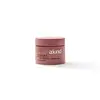What's inside
What's inside
 Key Ingredients
Key Ingredients

 Benefits
Benefits

 Concerns
Concerns

No concerns
 Ingredients Side-by-side
Ingredients Side-by-side

Water
Skin ConditioningZinc Chloride
AntimicrobialHydrolyzed Wheat Protein
Skin ConditioningCinnamomum Zeylanicum Bark Extract
AntimicrobialThymus Vulgaris Extract
PerfumingMalva Sylvestris Flower/Leaf/Stem Extract
Skin ConditioningHamamelis Virginiana Leaf Extract
Skin ConditioningPropanediol
SolventTripeptide-1
Skin ConditioningHexapeptide-9
Skin ConditioningPalmitoyl Tripeptide-5
Skin ConditioningPalmitoyl Pentapeptide-4
Skin ConditioningPalmitoyl Tetrapeptide-7
Skin ConditioningCamellia Sinensis Leaf Extract
AntimicrobialCitric Acid
BufferingLactic Acid
BufferingMalic Acid
BufferingGluconic Acid
Ascorbic Acid
AntioxidantGlycolic Acid
BufferingSalicylic Acid
MaskingTartaric Acid
BufferingPentylene Glycol
Skin ConditioningGlycerin
HumectantFructose
HumectantUrea
BufferingSodium Hydroxide
BufferingMaltose
MaskingSodium PCA
HumectantSodium Chloride
MaskingSodium Lactate
BufferingTrehalose
HumectantAllantoin
Skin ConditioningSodium Hyaluronate
HumectantGlucose
HumectantPEG-7 Glyceryl Cocoate
EmulsifyingCeramide NP
Skin ConditioningNiacinamide
SmoothingPhenoxyethanol
PreservativeEthylhexylglycerin
Skin ConditioningPolysorbate 20
EmulsifyingXanthan Gum
EmulsifyingHydroxyethylcellulose
Emulsion StabilisingRetinol
Skin ConditioningTocopheryl Acetate
AntioxidantWater, Zinc Chloride, Hydrolyzed Wheat Protein, Cinnamomum Zeylanicum Bark Extract, Thymus Vulgaris Extract, Malva Sylvestris Flower/Leaf/Stem Extract, Hamamelis Virginiana Leaf Extract, Propanediol, Tripeptide-1, Hexapeptide-9, Palmitoyl Tripeptide-5, Palmitoyl Pentapeptide-4, Palmitoyl Tetrapeptide-7, Camellia Sinensis Leaf Extract, Citric Acid, Lactic Acid, Malic Acid, Gluconic Acid, Ascorbic Acid, Glycolic Acid, Salicylic Acid, Tartaric Acid, Pentylene Glycol, Glycerin, Fructose, Urea, Sodium Hydroxide, Maltose, Sodium PCA, Sodium Chloride, Sodium Lactate, Trehalose, Allantoin, Sodium Hyaluronate, Glucose, PEG-7 Glyceryl Cocoate, Ceramide NP, Niacinamide, Phenoxyethanol, Ethylhexylglycerin, Polysorbate 20, Xanthan Gum, Hydroxyethylcellulose, Retinol, Tocopheryl Acetate
Water
Skin ConditioningHeptyl Undecylenate
EmollientIsononyl Isononanoate
EmollientLz1 Peptide
Sodium Acrylates Copolymer
Caprylic/Capric Triglyceride
MaskingSodium Hyaluronate
HumectantNiacinamide
SmoothingCopper Tripeptide-1
Skin ConditioningCeramide AP
Skin ConditioningPhenoxyethanol
PreservativeLecithin
EmollientPanthenol
Skin ConditioningTocopheryl Acetate
AntioxidantEthylhexylglycerin
Skin ConditioningAlpha-Glucan Oligosaccharide
CleansingSqualane
EmollientDisodium EDTA
EDTA
Water, Heptyl Undecylenate, Isononyl Isononanoate, Lz1 Peptide, Sodium Acrylates Copolymer, Caprylic/Capric Triglyceride, Sodium Hyaluronate, Niacinamide, Copper Tripeptide-1, Ceramide AP, Phenoxyethanol, Lecithin, Panthenol, Tocopheryl Acetate, Ethylhexylglycerin, Alpha-Glucan Oligosaccharide, Squalane, Disodium EDTA, EDTA
Ingredients Explained
These ingredients are found in both products.
Ingredients higher up in an ingredient list are typically present in a larger amount.
Ethylhexylglycerin (we can't pronounce this either) is commonly used as a preservative and skin softener. It is derived from glyceryl.
You might see Ethylhexylglycerin often paired with other preservatives such as phenoxyethanol. Ethylhexylglycerin has been found to increase the effectiveness of these other preservatives.
Niacinamide is a multitasking form of vitamin B3 that strengthens the skin barrier, reduces pores and dark spots, regulates oil, and improves signs of aging.
And the best part? It's gentle and well-tolerated by most skin types, including sensitive and reactive skin.
You might have heard of "niacin flush", or the reddening of skin that causes itchiness. Niacinamide has not been found to cause this.
In very rare cases, some individuals may not be able to tolerate niacinamide at all or experience an allergic reaction to it.
If you are experiencing flaking, irritation, and dryness with this ingredient, be sure to double check all your products as this ingredient can be found in all categories of skincare.
When incorporating niacinamide into your routine, look out for concentration amounts. Typically, 5% niacinamide provides benefits such as fading dark spots. However, if you have sensitive skin, it is better to begin with a smaller concentration.
When you apply niacinamide to your skin, your body converts it into nicotinamide adenine dinucleotide (NAD). NAD is an essential coenzyme that is already found in your cells as "fuel" and powers countless biological processes.
In your skin, NAD helps repair cell damage, produce new healthy cells, support collagen production, strengthen the skin barrier, and fight environmental stressors (like UV and pollution).
Our natural NAD levels start to decline with age, leading to slower skin repair, visible aging, and a weaker skin barrier. By providing your skin niacinamide, you're recharging your skin's NAD levels. This leads to stronger, healthier, and younger looking skin.
Another name for vitamin B3 is nicotinamide. This vitamin is water-soluble and our bodies don't store it. We obtain Vitamin B3 from either food or skincare. Meat, fish, wheat, yeast, and leafy greens contain vitamin B3.
The type of niacinamide used in skincare is synthetically created.
Learn more about NiacinamidePhenoxyethanol is a preservative that has germicide, antimicrobial, and aromatic properties. Studies show that phenoxyethanol can prevent microbial growth. By itself, it has a scent that is similar to that of a rose.
It's often used in formulations along with Caprylyl Glycol to preserve the shelf life of products.
Sodium Hyaluronate is hyaluronic acid's salt form. It is commonly derived from the sodium salt of hyaluronic acid.
Like hyaluronic acid, it is great at holding water and acts as a humectant. This makes it a great skin hydrating ingredient.
Sodium Hyaluronate is naturally occurring in our bodies and is mostly found in eye fluid and joints.
These are some other common types of Hyaluronic Acid:
Learn more about Sodium HyaluronateTocopheryl Acetate is AKA Vitamin E. It is an antioxidant and protects your skin from free radicals. Free radicals damage the skin by breaking down collagen.
One study found using Tocopheryl Acetate with Vitamin C decreased the number of sunburned cells.
Tocopheryl Acetate is commonly found in both skincare and dietary supplements.
Learn more about Tocopheryl AcetateWater. It's the most common cosmetic ingredient of all. You'll usually see it at the top of ingredient lists, meaning that it makes up the largest part of the product.
So why is it so popular? Water most often acts as a solvent - this means that it helps dissolve other ingredients into the formulation.
You'll also recognize water as that liquid we all need to stay alive. If you see this, drink a glass of water. Stay hydrated!
Learn more about Water